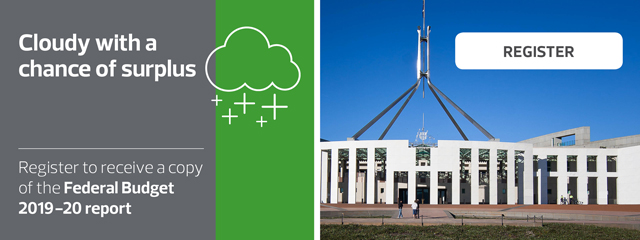The budget will be an opportunity to provide a suite of sweeteners to voters ahead of the expected May election.
Both sides of the political aisle have made a series of funding announcements to stake their credentials for the job of leading Australia in June. The better than expected budget outcomes outlined in the Mid-Year Economic and Fiscal Outlook is allowing the freedom to promise increased investment in infrastructure and additional funding for policy initiatives without compromising prudent economic management.
We would argue, however, that pre-election promises that diminish a future budget surplus does exactly that – particularly if any number of downside risks to Australia’s economic growth outlook come to be realised over the next three years. 
The government’s fiscal strategy to achieve budget surpluses on average, over the course of an economic cycle is a sound one. Budget deficits in bad times can cushion the impact of a downturn in the economy. In good times, running budget surplus can be used to reduce debt and build a buffer against future challenges. The Morrison Government announced in the 2018 MYEFO that the budget would return to surplus in 2019-20 with future surpluses exceeding 1 percent of GDP in the medium term allowing the country to, as the Treasurer noted, face the future with confidence. The MYEFO document also noted that the strong budget position would provide a buffer against any adverse developments that might occur in the global economy as well as providing more options when it comes to the policies needed to further enhance Australia’s growth prospects.
We argue that the appropriate balance between the two benefits that flow from a strong budget position is changing as the risk of ‘adverse developments’ increase.
The International Monetary Fund has outlined a number of risks that might derail the growth forecasts that underpin the forecast budget outcome. These include weaker growth in China, rising protectionism and a retreat from multilateralism as well as a sharper downturn in the housing market than expected impacting on residential investment and private consumption. 
Policies that encourage both economic growth and greater flexibility to deal with the economic risks should be pursued. Whilst certainly not limited to broad-based tax reform, such reform is essential particularly in shifting the nation’s over-reliance on income tax and continuing to encourage innovation and investment. This is where the Government should continue to provide and encourage a robust and non-discriminatory R&D tax incentive program, to support innovation growth. The highest performing R&D nations such as France and Israel have a healthy mix of R&D Tax Incentives and direct support. The R&D Tax Incentive is a good overall behavioural tool to encourage innovation within companies as proven by detailed research undertaken across the OECD economies.
To remain competitive regionally with countries such as Korea and Singapore which also have healthy R&D and innovation programs, it is critical that the innovation agenda remains top of mind going forward. In addition to this, the new R&D program proposed for New Zealand provides even more impetus for Australia to maintain a strong R&D program, to prevent Australian companies moving their R&D “across the pond” for a potentially more generous program. This is especially the case for the growing technology/start up sectors, where the New Zealand legislation has been drafted to clearly support these sectors, as highlighted in the recently released draft guidelines.
For more information
If you have any questions or require further information, please contact your local RSM adviser today.
This article has been written with insight from Robin Barlow of Ninesquared. Robin can be contacted at [email protected]





